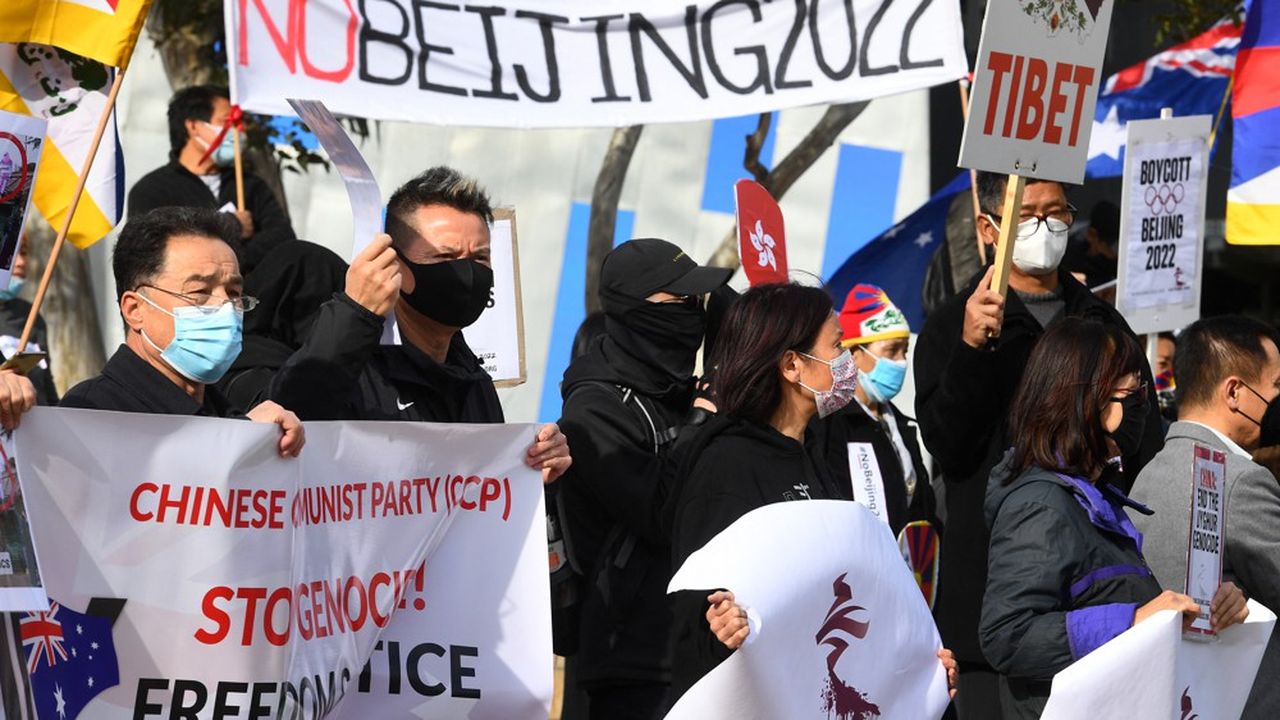Canada has seen successive waves of immigration from Ukraine, part of which was orchestrated by a priest from Rimouski. who will also be one of the defenders the independence of the country.
When Ukraine experienced temporary independence at the end of World War I, its new president, Yevhen Petrouchevytch, asked a Rimouski pastor, Father Joseph Jean, to become both his private secretary and interpreter. Father Jean had already campaigned energetically for that country’s accession to independence. The adventure of the new independent state, under pressure from Moscow, will come to an end. However, Father Jean will continue to work for the Ukrainians, particularly with the political exiles who have found refuge in Vienna and with the League of Nations in Geneva, the ancestor of the UN. Partly around Joseph Jean, a large wave of Ukrainian immigration was organized in Quebec but also in Canada, while he continued to demand independence for the country.
Before the war of 1914-1918, this Franco-Canadian religious had expressed a desire to leave his village of Saint-Fabien-sur-Mer. He had met Metropolitan André Sheptytsky and then converted to the Ukrainian rite. In the summer of 1914, when Europe was torn apart, he was there. Hundreds of executions are carried out in the courtyard of his monastery. He narrowly escapes the firing squad.
It was the collapse of the Austro-Hungarian monarchy, the Soviet revolution and the upheaval of the alliances at the end of the war that allowed Ukrainian Galicia to proclaim its independence. In Canada, meanwhile, many Ukrainians who arrived before 1914 and were suspected of collusion with the Austro-Hungarian Empire were interned and mistreated. Independent Ukraine is crushed while the Bolsheviks in Moscow gain the upper hand in the civil war.
Ukrainians in Abitibi
After trying prison and escaping to Vienna, François Jean returns to Quebec. From 1925, under the name Josaphat Jean, he promoted the immigration of 15,000 Ukrainian families to the settlement areas of Abitibi. Ukraine is emptying because Stalin arrived there. The people suffer from impossible living conditions, decimated by an ideologically planned famine.
The first plans for a Ukrainian settlement in Abitibi assume the arrival of no fewer than 10,000 families. They would be placed in the shadow of a new monastery, with a new kingdom awaiting them. This immigrant village is called Sheptetsky, in honor of the metropolis of the same name. It was raised near Lac Castagnier, not far from Amos.
Sheptetsky initially houses 50 families. But these colonization efforts, by no means all, fail. Despite this, hundreds of Ukrainians are settling in the region. In Rouyn itself, a small Ukrainian church is a constant reminder of their strong presence. The history of the world of work is not without knowing that Ukrainians will be numerous to perish in the mine shafts. For his part, Joseph Jean will then take care of other Ukrainian immigration villages on the Alberta side. He even set up a museum in Mundare there.
The Canadian government will long encourage Ukrainian immigration to colonize certain parts of the country, particularly the western prairies. There are four main waves of Ukrainian immigration to Canada. given I’Russian invasion February 2022, a fifth will probably have to be added soon.
The first wave of immigration took place between 1890 and the First World War. From 1890, immigrants from this region landed. The first identified people arrive in Montreal. In 1913 Canada welcomed 400,000 immigrants while its population was approximately eight million. All in all, that would equate to more than a million and a half immigrants in just one year today. Of these, it is difficult to know exactly which should be considered Ukrainians, as national definitions have since changed. The registers list them as immigrants as Galicians, Ruthenians, Russians, Bukovinians, Uniates, Greek Catholics, and among several other denominations. However, most of them settled in western Canada: Manitoba, Saskatchewan and Alberta.
About 1,000 Ukrainians settled in Montreal’s working-class neighborhood of Pointe-Saint-Charles. Others are located around Saint-Laurent Boulevard. They serve there as cheap labour. To the east, in the Frontenac district, on the corner of Hochelaga and Iberville streets, the first Ukrainian parish was established just before the 1939 war. Several Poles also settled in the area. The fact remains that the majority of immigration during this period is on the Western Canada side. All were promised the riches of mountains of easily gathered wheat, which in truth existed only in dreams.
A second wave of immigration formed in the interwar period. A famine orchestrated by Stalin encourages flight to the New World. In expressing their religious convictions, the newcomers encounter the hierarchical ideas of the Catholics. An orthodox community emerged in Montreal in the mid-1920s, and in the 1930s a good portion of the metropolis’ 4,000 Ukrainians lived in the working-class districts to the east. Many of them meet around De Lorimier Avenue near Ontario Street. During this time, Father Jean was with this community, but in Manitoba.
[1945amEndedesKriegeshattediekanadischeArmee40000UkrainerinihrenReihenKurzbevorMoskaudenEisernenVorhangfürdieRegionendgültigsenktbeginnteinedrittePhasederukrainischenEinwanderungZurückinderUkrainedannvorübergehendinEnglandstationiertkümmertesichPaterJosephJeaneinheftigerAntikommunistumdieOrganisationeinesgroßenTeilsderEinwanderungnachKanadaEs waren 30.000 Ukrainer, die 1947 in Kanada landeten.Noch heute gibt es rund um die Rue de l’Ukraine in Montreal wichtige Spuren dieser Gemeinschaft, die damals im Schatten der Türme einer riesigen Kirche organisiert war. Einige Ukrainer ließen sich auch in Lachine nieder, in einer neuen Pfarrei, die ihnen vorbehalten war. In Rouyn errichtete die seit Jahren präsente ukrainische Gemeinde in der zweiten Hälfte der 1950er Jahre eine byzantinische Kirche, Ukrainer ließen sich in allen Regionen Québecs nieder.
Eine neue Welle
Bis in die 1960er Jahre fanden viele Ukrainer auf der Flucht vor dem Sowjetregime Zuflucht in Kanada. Die meisten dieser Neuankömmlinge gehen zuerst durch Montreal. Nach dem Fall der Berliner Mauer und der Normalisierung der Beziehungen zum ehemaligen Sowjetimperium ab den 1990er Jahren traf eine vierte ukrainische Einwanderungswelle in Kanada ein. So sehr, dass es im Jahr 2016 nach Angaben des Ministeriums für Einwanderung, Franziskation und Integration mehr als 42.000 Bürger ukrainischer Herkunft in Quebec gab.
Die Invasion der Ukraine durch die russische Armee könnte zu einer neuen Einwanderungswelle führen. Ottawa kündigte am Donnerstag zwei Sonderprogramme für Ukrainer an. Während weiterhin ein Visum erforderlich ist, wird ihnen eine „Kanada-Ukraine-Notfallreisegenehmigung“ ermöglichen, vorübergehend Zuflucht im Land zu finden. Das Patenschaftsprogramm, das es denjenigen, die bereits in Kanada sind, ermöglicht, ihre Familienmitglieder nachzubringen, wird für Ukrainer dauerhaft beschleunigt.
Entsprechend Volkszählung 2016 sind fast 4 % der kanadischen Bevölkerung ukrainischer Herkunft. Seit Beginn der Invasion sind mehr als eine Million ukrainische Bürger, hauptsächlich Frauen und Kinder, aus dem Land geflohen.
Im Video zu sehen

Total web buff. Student. Tv enthusiast. Evil thinker. Travelaholic. Proud bacon guru.







;Composite=(type=URL,url=https://images.radio-canada.ca/v1/assets/elements/16x9/outdated-content-2013.png),gravity=SouthEast,placement=Over,location=(0,0),scale=1)